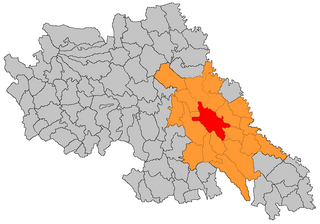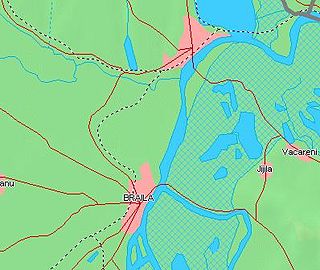
A metropolitan area or metro is a region that consists of a densely populated urban agglomeration and its surrounding territories sharing industries, commercial areas, transport network, infrastructures and housing. A metro area usually comprises multiple principal cities, jurisdictions and municipalities: neighborhoods, townships, boroughs, cities, towns, exurbs, suburbs, counties, districts, and even states and nations like the eurodistricts. As social, economic and political institutions have changed, metropolitan areas have become key economic and political regions. Metropolitan areas typically include satellite cities, towns and intervening rural areas that are socioeconomically tied to the principal cities or urban core, often measured by commuting patterns. Metropolitan areas are sometimes anchored by one central city such as Paris metropolitan area (Paris), Mumbai Metropolitan Region. In other cases metropolitan areas contain multiple centers of equal or close to equal importance especially in the United States, for example the Dallas–Fort Worth metropolitan area has 8 principal cities. The Islamabad–Rawalpindi metropolitan area, the Rhine-Ruhr in Germany and Randstad in the Netherlands are other examples.

The Paris metropolitan area is a statistical area that describes the reach of commuter movement to and from Paris, France and its surrounding suburbs.

The Madrid metropolitan area is a monocentric metropolitan area in the centre of the Iberian peninsula, around the municipality of Madrid, Spain. It is not related to any sort of administrative delimitation, and thus, its limits are ambiguous.
The larger urban zone (LUZ), or functional urban area (FUA), is a measure of the population and expanse of metropolitan and surrounding areas which may or may not be exclusively urban. It consists of a city and its commuting zone outside it.

The Iași Metropolitan Area is a metropolitan association in Iași County, Romania, that includes the municipality of Iași and 19 nearby communes.

The Bucharest Metropolitan Area is a proposed metropolitan area project that includes Bucharest, the capital city of Romania, and surrounding communes. If completed, it would have a population of about 2.3 million, only slightly larger than that of the city proper. It would also be a member of the METREX network.

Metropolitan areas in Romania are private agencies of public utility which were established by Law no. 351 of 6 July 2001 with the aim of encouraging the development of neighboring towns and communes within a radius of 30 km. The first to be established was the metropolitan area of Iași, on 8 April 2004, while the last is that of Drobeta-Turnu Severin, on 28 August 2019. There are 24 metropolitan areas in Romania that have been constituted as of 2019.

The Constanța metropolitan area, is a metropolitan area, established in 2007, that includes the municipality of Constanța, the towns of Năvodari, Ovidiu, Eforie, Murfatlar, Techirghiol and 8 communes: Mihail Kogălniceanu, Cumpăna, Valu lui Traian, Lumina, Tuzla, Agigea, Corbu and Poarta Albă. It has a population of 425,916, in an area consisting of 16% of Constanța County.

The Brașov metropolitan area is a metropolitan area in Brașov County, Romania, that includes the municipality of Brașov and 12 other nearby communities. It was constituted in 2007 with the aim of creating business opportunities, building and administering of living spaces and recreational areas, to attract more consistent investment, and to coordinate better environment and infrastructure projects. As of 2011, the area has a population of 369,896. The total area is 1,368.5 km².

Oradea metropolitan area is a metropolitan area located in Western Romania, in the County of Bihor, Crişana, Transylvania, Romania and was founded on 9 May 2005.

The Danube metropolitan area or Galați–Brăila metropolitan area is a proposed metropolitan area project in Romania. It would be formed from the cities of Galați and Brăila. Together they have a population of about 430,000 people.

The Bacău metropolitan area is a proposed metropolitan area project that includes the urban area of Bacău. It includes the communes of Letea Veche, Buhoci, Luizi-Călugăra, Săucești, Hemeiuș, Gârleni, Racova, Mărgineni, Măgura and others, and would extend to the town of Buhuși. If completed, the metropolitan would have an estimated population of 188,709.

Ploieşti metropolitan area is a proposed metropolitan area project, launched in 2003.

The Satu Mare Metropolitan Area is a metropolitan area of Romania founded on April 26, 2013 around Satu Mare, the capital city of Satu Mare County. It has a population of 233,306 and, besides Satu Mare, it includes four cities and towns, as well as 26 communes.
The Târgu Mureș metropolitan area is a metropolitan area in Târgu Mureș, Romania. It was founded in 2005. It has a population of 209,532 as of the 2011 census. It is Romania's only metropolitan area where Hungarians form the largest ethnic group, with 98,593 people. The Romanian population is 95,867. Other ethnicities include Romani, Germans, Italians, and Jews.

An aire d'attraction d'une ville is a statistical area used by France's national statistics office INSEE since 2020, officially translated as functional area in English by INSEE, which consists of a densely populated urban agglomeration and the surrounding exurbs, towns and intervening rural areas that are socioeconomically tied to the central urban agglomeration, as measured by commuting patterns. INSEE's functional area (AAV) is therefore akin to what is most often called metropolitan area in English.














